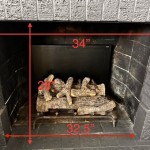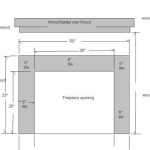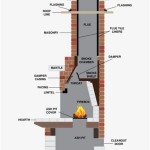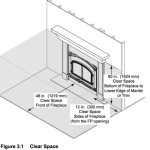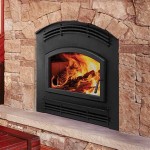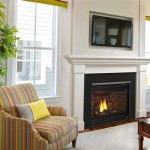Heat & Glo Fireplace Not Getting Gas in Singapore: Troubleshooting Guide
The absence of gas flow to a Heat & Glo fireplace in a Singaporean residence presents a significant issue, demanding immediate attention and a systematic approach to identification and resolution. The temperate climate of Singapore might not necessitate constant fireplace usage, leading to periods of inactivity that can contribute to gas line issues and component malfunctions. Therefore, understanding the potential causes and implementing appropriate troubleshooting steps is crucial to restoring the fireplace's functionality and ensuring the safety of the occupants.
Several factors can contribute to a Heat & Glo fireplace not receiving gas. These range from simple issues like a closed gas valve to more complex problems within the gas supply line, the fireplace's control system, or component failures. Thorough examination and, in some cases, professional assistance are necessary to diagnose and rectify the problem effectively. It is imperative to prioritize safety during this process, ensuring all gas-related work is conducted with appropriate precautions and in compliance with Singaporean regulations.
1. Verifying the Gas Supply
The initial step in troubleshooting a Heat & Glo fireplace experiencing gas supply issues involves confirming the availability of gas to the appliance. This encompasses checking the main gas meter, any shut-off valves along the gas line leading to the fireplace, and the appliance's dedicated gas valve. These valves are typically located near the fireplace or within the appliance's control compartment. Ensure that all valves are fully open and that there are no obstructions preventing the flow of gas.
Prior to manipulating any gas valves, it is crucial to be aware of their configuration and intended function. A partially closed or incorrectly positioned valve will impede gas flow, preventing the fireplace from igniting. In Singapore, gas supply is typically regulated and distributed by a central provider. It is advisable to verify with the gas provider that there are no scheduled maintenance activities or unforeseen disruptions affecting the gas supply to the property. Contacting the provider will also help confirm that the gas meter is functioning correctly and registering gas consumption as expected.
If the gas meter appears to be malfunctioning or if there is any suspicion of a gas leak, immediately contact the gas provider's emergency hotline. Do not attempt to repair the gas meter or gas lines yourself. Professional assistance is required to address gas leaks and ensure the safety of the premises. Evacuate the area and ventilate the space until the gas provider's technicians arrive to assess and resolve the situation.
Beyond the main gas meter, individual shut-off valves are often installed along the gas line to allow for localized repairs or maintenance without disrupting the entire gas supply. These valves are usually located near appliances that use gas, such as water heaters, stoves, and fireplaces. Ensure that the valve dedicated to the fireplace is completely open and not inadvertently closed. A quarter-turn ball valve is a common type of shut-off valve used in gas lines. When the handle is aligned with the gas pipe, the valve is open; when it is perpendicular to the pipe, the valve is closed.
The fireplace itself will also have a dedicated gas valve, typically located within the control compartment or near the gas inlet connection. This valve allows for isolating the fireplace from the gas supply for service or safety reasons. Verify that this valve is open and that no mechanical obstructions are preventing it from operating correctly. If the valve feels stiff or difficult to turn, avoid forcing it, as this could damage the valve or the gas line. Consult a qualified technician for assistance in repairing or replacing malfunctioning gas valves.
2. Inspecting the Pilot Light Assembly
Many Heat & Glo fireplaces utilize a pilot light assembly to ignite the main burner. If the pilot light is not lit, the fireplace will not receive gas and will fail to operate. The pilot light assembly consists of the pilot light burner, thermocouple or thermopile, and the gas supply line. A malfunctioning or dirty pilot light assembly is a common cause of gas supply issues.
The pilot light's primary function is to provide a continuous flame that ignites the main burner when heat is called for. The thermocouple or thermopile is a safety device that senses the presence of the pilot light flame. If the pilot light goes out, the thermocouple or thermopile will shut off the gas supply to the main burner, preventing the accumulation of unburned gas. This is a critical safety feature that prevents potential explosions or carbon monoxide poisoning.
To inspect the pilot light assembly, visually examine the pilot light burner for any debris, soot, or obstructions. Use a small brush or compressed air to clean the burner and ensure that the pilot light flame is burning cleanly and consistently. A weak or flickering pilot light flame may indicate a problem with the gas supply or the thermocouple/thermopile.
The thermocouple/thermopile is a heat-sensitive device that generates a small electrical current when heated by the pilot light flame. This current is used to keep the gas valve to the main burner open. If the thermocouple/thermopile is defective, it will not generate enough current, and the gas valve will remain closed, preventing the fireplace from igniting. To test the thermocouple/thermopile, use a multimeter to measure the voltage output while the pilot light is lit. If the voltage is below the manufacturer's specified range, the thermocouple/thermopile needs to be replaced.
Before replacing any components, ensure that the gas supply is shut off to the fireplace. Disconnect the gas line leading to the pilot light assembly and carefully inspect it for any leaks or damage. Replace any damaged gas lines or fittings. When reassembling the pilot light assembly, ensure that all connections are tight and secure. Use a gas leak detector solution to check for any leaks after reconnecting the gas supply.
3. Examining the Ignition System and Control Module
Heat & Glo fireplaces employ various ignition systems, ranging from standing pilot systems to electronic ignition systems. The ignition system is responsible for initiating the combustion process and igniting the main burner. A malfunctioning ignition system can prevent the fireplace from receiving gas and operating correctly. In Singapore, electronic ignition systems are common due to their efficiency and safety features.
Electronic ignition systems typically utilize a spark igniter or a hot surface igniter to ignite the gas. The igniter is controlled by a control module, which monitors various parameters, such as gas pressure, flame presence, and temperature. If any of these parameters are outside of acceptable limits, the control module will shut off the gas supply to the fireplace. The control module also manages safety features such as flame rectification, which ensures the burner is lit throughout operation.
When troubleshooting ignition system problems, start by checking the power supply to the control module. Ensure that the fireplace is plugged into a functioning electrical outlet and that the circuit breaker is not tripped. Use a multimeter to verify that the control module is receiving the correct voltage. If the power supply is adequate, inspect the wiring connections to the igniter and the gas valve for any loose or corroded connections. Clean or tighten any loose connections and replace any damaged wires.
If the igniter is not producing a spark or heating up, it may be defective and need to be replaced. To test the igniter, use a multimeter to measure its resistance. If the resistance is outside of the manufacturer's specified range, the igniter needs to be replaced. When replacing the igniter, ensure that you use the correct replacement part for your specific Heat & Glo fireplace model. Incorrect igniters can cause ignition problems or damage the control module.
The control module itself can also be a source of problems. If the control module is malfunctioning, it may not be able to properly control the gas valve or the igniter. A faulty control module can also cause intermittent ignition problems or complete failure of the fireplace. To test the control module, consult the manufacturer's service manual for specific troubleshooting procedures. In many cases, replacing the control module is the only way to resolve problems with the ignition system. Professional assistance is highly recommended when diagnosing or replacing the control module due to its complexity and the potential safety hazards involved.
Furthermore, the flame sensor, acting as a critical safety component, should be examined. This sensor, commonly a flame rectification sensor, detects the presence of a flame after ignition. If the sensor fails to detect a flame, the control module will automatically shut off the gas supply to prevent unburned gas from accumulating. A dirty or malfunctioning flame sensor can cause the fireplace to shut off prematurely or fail to ignite altogether. Clean the flame sensor with a fine-grit sandpaper or steel wool to remove any deposits or corrosion. If the flame sensor continues to malfunction, it may need to be replaced.
Following all troubleshooting steps, and if the fireplace still fails to receive gas, it is essential to seek professional assistance from a qualified gas technician. Attempting complex repairs without the necessary knowledge and experience can be dangerous and may void the fireplace's warranty. Gas-related work in Singapore is subject to strict safety regulations, and only certified technicians are authorized to perform certain types of repairs.

Heat Glo Gas Fireplace Operation

10 Things You Need To Know About Your Heat Glo Fireplace

5 Surprising Reasons Your Gas Fireplace Won T Turn On

Best Gas Fireplaces For Custom Homes Builders In 2025

Heat Glo Fireplace Information And Features

Heat Glo 6k Modern

Heat Glo Fireplace Service Repairs Installation In Sydney

10 Things You Need To Know About Your Heat Glo Fireplace

Heat Glo Gas Fireplace Insert Installation Repair Jacobs

Heat Glo I25x Insert Gas Heater
Related Posts

